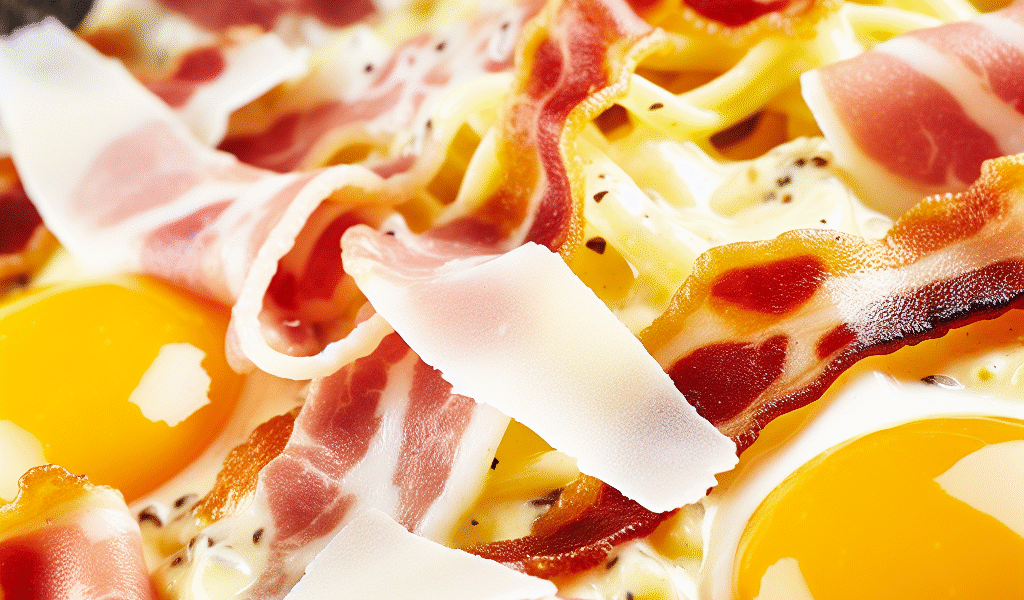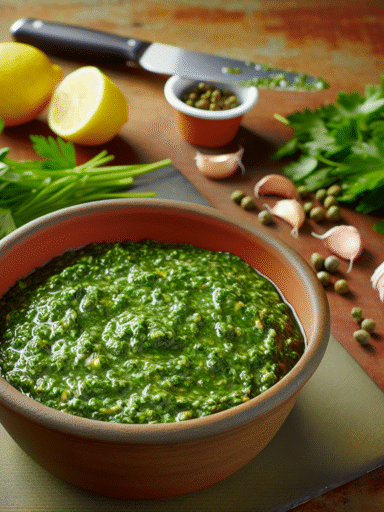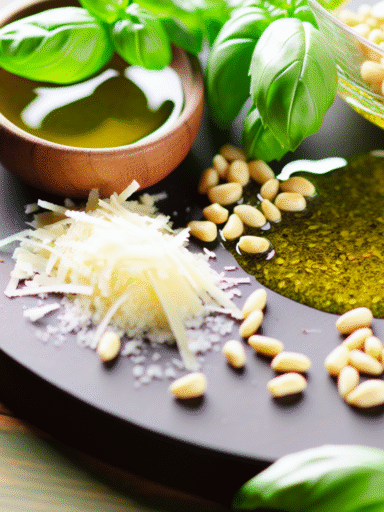Classic Italian Carbonara
Tags / Categories: creamy, savory, smoky | main ingredients: eggs, guanciale, pecorino romano, black pepper | region: Lazio, Italy | usage: pasta sauce, quick weeknight meal, traditional Italian cuisine
- Prep time: 10 minutes
- Cook time: 15 minutes
- Total time: 25 minutes
- Difficulty level: Easy to Moderate
- Yield: Serves 4
Introduction to Carbonara
If you love rich, comforting dishes that come together quickly, Carbonara will become your new favorite. This classic Roman pasta sauce blends eggs, pecorino cheese, and guanciale to create a velvety coating for spaghetti or bucatini. No cream, no fuss—just simple ingredients building deep, smoky, and cheesy flavors that make every bite unforgettable.
The Art of Making Authentic Carbonara
There’s a gentle magic in getting Carbonara just right. It’s all about timing and texture. The key ingredient is guanciale, cured pork cheek, which crisps up beautifully and lends a smoky depth you just can’t replicate. But pancetta works if you need a substitute. When the guanciale is sizzling in the pan, your kitchen will smell amazing right about now. Meanwhile, the eggs and cheese are whisked together with freshly cracked black pepper—but no cream here! The trick is to toss the hot pasta with this mixture off the heat, letting the gentle warmth cook the sauce to a silky, clingy perfection without scrambling the eggs. Don’t stress if it looks a little chunky at first—that’s where the tossing works its magic.
Ingredients
- 400g spaghetti or bucatini
- 150g guanciale, diced (or pancetta as a substitute)
- 3 large eggs
- 100g Pecorino Romano cheese, finely grated
- Freshly cracked black pepper, to taste
- Salt, for pasta water
- Optional: 1 small garlic clove, lightly crushed (for added aroma)
Instructions
- Prepare the pasta water: Bring a large pot of salted water to a boil. Add the spaghetti and cook until al dente according to package instructions.
- Cook the guanciale: While pasta cooks, place diced guanciale in a cold pan. Turn heat to medium and slowly render fat until the pieces are golden and crispy, about 6-8 minutes. Remove from heat and if you used garlic, discard it now for a subtle aroma.
- Mix eggs & cheese: In a bowl, whisk eggs with the grated Pecorino and a generous amount of freshly cracked black pepper until combined.
- Combine pasta & guanciale: Once pasta is done, reserve about a cup of pasta water, then drain the pasta. Quickly add hot pasta to the pan with guanciale (off the heat) and toss to coat.
- Create the sauce: Pour the egg and cheese mixture over the pasta, tossing vigorously to coat every strand. Add reserved pasta water little by little to achieve a creamy texture—think luscious but not runny.
- Final touches: Adjust seasoning with more pepper and Pecorino if desired. Serve immediately while warm, because Carbonara waits for no one!
Serving Suggestions & Enjoying Carbonara
Traditionally, Carbonara shines on its own, paired with a simple green salad and crusty bread to sop up any sauce left on your plate. But it also goes beautifully with a light white wine, like a Frascati or Pinot Grigio. Craving a little extra? Toss in a handful of fresh parsley for a bright pop or add peas for a touch of sweetness—though purists might raise an eyebrow!
Origin & History
Carbonara’s origins trace back to mid-20th-century Rome, with some saying it was born out of the post-WWII era, influenced by American soldiers’ bacon and eggs. The name “Carbonara” likely connects to coal workers (“carbonari”) and the dish’s peppery, coal-dust appearance. This humble pasta has since become a symbol of Roman cucina povera—simple, affordable food lifted to art by quality ingredients and technique.
Variations & Substitutions
Sticking to tradition is delicious, but life happens! No guanciale? Pancetta or thick-cut bacon work, though they skew sweeter and less fatty. For a vegetarian twist, try smoked mushrooms for that hint of umami. If you want to dial up the creaminess, a splash of cream is popular abroad—but old-school Italians consider it a sin. Want to lighten it up? Use egg whites only (though you lose some silkiness). Gluten-free pasta? That’s easy to swap in and just as satisfying.
Storage & Make-Ahead Tips
Carbonara is best enjoyed fresh—you don’t want to reheat it and end up with scrambled eggs! If you must, refrigerate leftovers in an airtight container for up to 2 days. Reheat gently in a pan over low heat with a splash of water or broth to loosen the sauce. Freeze isn’t recommended as eggs and cheese can separate. When in doubt, prepare pasta and sauce components separately and assemble last minute.
Nutritional Information (Per Serving)
- Calories: ~490 kcal
- Protein: 22g
- Fat: 22g (mostly from guanciale and eggs)
- Carbohydrates: 50g
- Fiber: 2g
- Sodium: Moderate, depending on cheese and pork saltiness
Related Sauces / Try Next
- Alfredo Sauce – creamy and cheesy but with a butter base
- Puttanesca – a tangy, olive-and-caper-packed tomato sauce
- Cacio e Pepe – simplicity of cheese and pepper, sibling to Carbonara
FAQ
- Can I make Carbonara without guanciale?
- Absolutely! Pancetta or a good quality smoked bacon are common substitutes. The flavor will shift slightly but still delicious.
- Why doesn’t Carbonara use cream?
- Traditional Carbonara relies on eggs and cheese for its creamy texture. Cream is often added outside Italy but isn’t part of the authentic recipe.
- How do I prevent the eggs from scrambling?
- The secret is to remove the pan from direct heat before adding the egg mixture and toss quickly with the hot pasta so residual heat gently cooks the eggs without scrambling.
Conclusion
Mastering Carbonara means mastering simplicity and timing. It’s a glorious weekend treat or an elegant weeknight fix that proves great food doesn’t need a laundry list of ingredients. With crispy guanciale, creamy eggs, sharp Pecorino, and a generous crack of black pepper, every bite is a little celebration of Roman tradition. So gather your ingredients and have fun—you’re about to make one unforgettable pasta dish!



